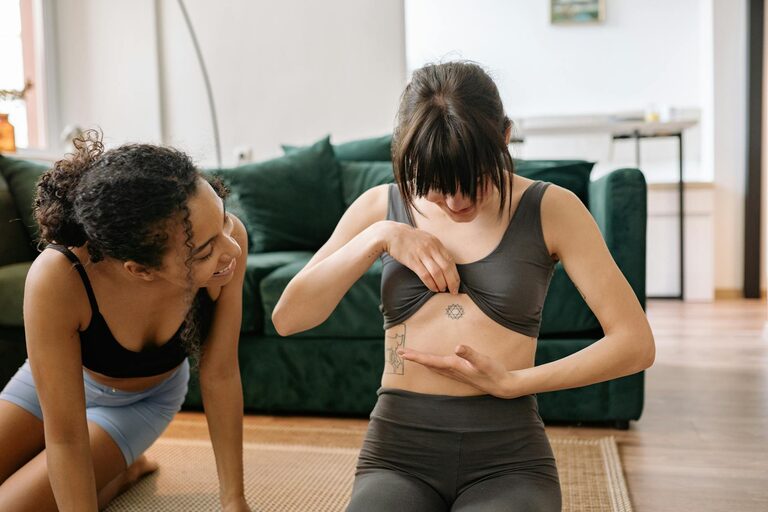A Beginner’s Guide to Stretching at Home for Better Flexibility

Stretching is a simple yet powerful way to enhance your physical health. Whether you want to improve flexibility, reduce muscle tension, or just feel more relaxed, stretching at home is accessible and beneficial for all fitness levels. This beginner’s guide will walk you through the basics of stretching, helpful tips, and a few easy routines to try.
Why Stretch at Home?
Stretching offers numerous benefits, including:
– Improved flexibility: Helps your body move more freely and reduces stiffness.
– Better posture: Regular stretching can alleviate muscle imbalances caused by poor sitting habits.
– Reduced muscle tension: Stretching helps to relax tight muscles, especially after long periods of inactivity.
– Increased blood circulation: Promotes better oxygen flow to your muscles.
– Stress relief: Stretching encourages mindfulness and relaxation.
Doing these exercises at home means you can fit them into your day at your own pace without needing special equipment or a gym membership.
Getting Started: Basic Guidelines
Before jumping into stretching routines, consider these basic tips to make your practice safe and effective:
– Warm up first: Stretching cold muscles can cause injury. Do light aerobic activity like walking or marching in place for 5 minutes beforehand.
– Stretch slowly: Ease into each stretch with controlled movements; avoid bouncing or jerky motions.
– Hold each stretch: Aim to hold stretches for 15–30 seconds, repeating 2–4 times per muscle group.
– Listen to your body: Stretching should create a gentle tension, never sharp or painful sensations.
– Breathe deeply: Inhale and exhale smoothly during each stretch, helping your muscles relax.
– Stretch both sides: Ensure you work on both left and right sides evenly to prevent imbalances.
Essential Stretching Exercises for Beginners
Here are some easy stretches that target major muscle groups. They require no equipment and can be done in a small space.
1. Neck Stretch
Relieves tension in the neck and shoulders.
– Sit or stand tall.
– Slowly tilt your right ear toward your right shoulder until you feel a gentle stretch.
– Hold for 20 seconds, then switch sides.
2. Shoulder Rolls
Loosens the shoulder joints.
– Stand or sit with your spine straight.
– Roll your shoulders forward in a circular motion 10 times.
– Reverse direction and roll backward 10 times.
3. Chest Stretch
Opens tight chest muscles, especially useful if you spend a lot of time sitting.
– Stand near a wall or doorway.
– Raise your arm to shoulder height and place your palm on the surface.
– Gently turn your body away from your arm until you feel a stretch in your chest.
– Hold for 20–30 seconds, then switch arms.
4. Seated Forward Bend
Stretches the hamstrings and lower back.
– Sit on the floor with legs extended straight ahead.
– Keep your back straight and gently lean forward from your hips, reaching toward your toes.
– Stop when you feel a comfortable stretch in the backs of your legs.
– Hold for 20–30 seconds.
5. Cat-Cow Stretch
Mobilizes the spine and eases back stiffness.
– Start on all fours with wrists under shoulders and knees under hips.
– Inhale, arch your back, lifting your head and tailbone (Cow Pose).
– Exhale, round your spine, tucking your chin and tailbone (Cat Pose).
– Repeat this sequence 8–10 times, moving slowly.
6. Standing Quadriceps Stretch
Stretches the front of the thigh.
– Stand tall and hold onto a chair or wall for balance.
– Bend your right knee and bring your heel toward your buttocks.
– Hold your ankle with your right hand without arching your back.
– Hold for 20 seconds, then switch legs.
7. Child’s Pose
A gentle stretch for the back, hips, and thighs.
– Kneel on the floor, sit back on your heels.
– Bend forward, extending your arms in front and lowering your forehead to the floor.
– Hold this pose for 30 seconds or longer while breathing deeply.
Tips to Make Stretching a Habit
Consistency is key to seeing benefits from stretching. Here are ideas to help you stretch regularly at home:
– Set a routine: Schedule stretching as part of your morning or evening ritual.
– Keep it short: Even 10 minutes daily can make a difference.
– Use reminders: Set phone alerts or leave notes as gentle prompts.
– Combine with other activities: Stretch after workouts, walking, or sitting for long periods.
– Create a comfortable space: Use a yoga mat or soft surface in a quiet area.
Know When to Avoid Stretching
While stretching is safe for most people, there are times to be cautious:
– Avoid stretching injured areas until healed.
– If you experience sharp pain or dizziness, stop immediately.
– Consult a professional if you have existing medical conditions or severe muscle tightness.
Final Thoughts
Stretching at home is a great way to care for your body and mind without complicated routines or equipment. Starting with simple stretches and practicing regularly can lead to increased flexibility, reduced discomfort, and an overall greater sense of well-being. Remember to be patient with yourself as your body adjusts, and enjoy the calming benefits of these mindful movements.
Happy stretching!




